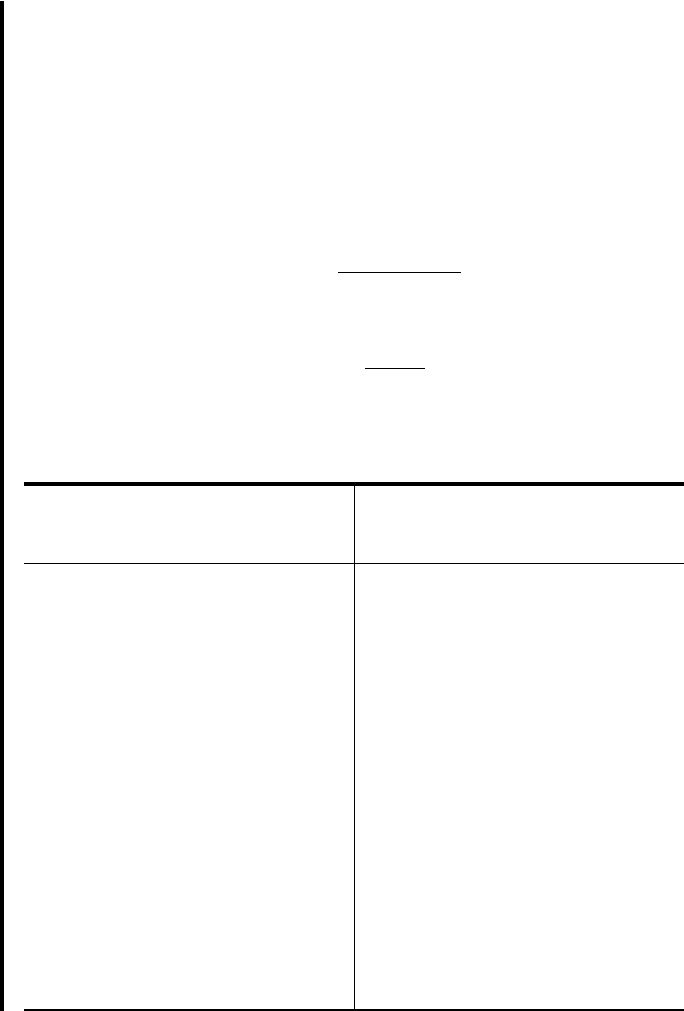Daniel W.W. Biostatistics: A Foundation for Analysis in the Health Sciences
Подождите немного. Документ загружается.


4. Test statistic. By means of the Friedman test we will be able to deter-
mine if it is reasonable to assume that the columns of ranks have been
drawn from the same population. If the null hypothesis is true we would
expect the observed distribution of ranks within any column to be the
result of chance factors and, hence, we would expect the numbers 1, 2,
and 3 to occur with approximately the same frequency in each column.
If, on the other hand, the null hypothesis is false (that is, the models are
not equally preferred), we would expect a preponderance of relatively
high (or low) ranks in at least one column. This condition would be
reflected in the sums of the ranks. The Friedman test will tell us whether
or not the observed sums of ranks are so discrepant that it is not likely
they are a result of chance when is true.
Since the data already consist of rankings within blocks (rows), our
first step is to sum the ranks within each column (treatment). These sums
are the shown in Table 13.9.1. A test statistic, denoted by Friedman
as is computed as follows:
(13.9.1)
where the number of rows (blocks) and the number of columns
(treatments).
5. Distribution of test statistic. Critical values for various values of n and
k are given in Appendix Table O.
6. Decision rule. Reject if the probability of obtaining (when is
true) a value of as large as or larger than actually computed is less
than or equal to
7. Calculation of test statistic. Using the data in Table 13.9.1 and Equa-
tions 13.9.1, we compute
8. Statistical decision. When we consult Appendix Table Oa, we find that
the probability of obtaining a value of as large as 8.222 due to chance
alone, when the null hypothesis is true, is .016. We are able, therefore,
to reject the null hypothesis.
9. Conclusion. We conclude that the three models of low-volt electrical
stimulator are not equally preferred.
10. p value. For this test, ■
Ties When the original data consist of measurements on an interval or a ratio scale
instead of ranks, the measurements are assigned ranks based on their relative magni-
tudes within blocks. If ties occur, each value is assigned the mean of the ranks for which
it is tied.
p = .016.
x
2
r
x
2
r
=
12
913213 + 12
31152
2
+ 1252
2
+ 1142
2
4- 319213 + 12= 8.222
a.
x
2
r
H
0
H
0
k =n =
x
2
r
=
12
nk1k + 12
a
k
j =1
1R
j
2
2
- 3n1k + 12
x
2
r
,
R
j
H
0
13.9 THE FRIEDMAN TWO-WAY ANALYSIS OF VARIANCE BY RANKS
727

Large Samples When the values of k and/or n exceed those given in Table O,
the critical value of is obtained by consulting the table (Table F) with the chosen
and degrees of freedom.
EXAMPLE 13.9.2
Table 13.9.2 shows the responses, in percent decrease in salivary flow, of 16 experimental
animals following different dose levels of atropine. The ranks (in parentheses) and the sum
of the ranks are also given in the table. We wish to see if we may conclude that the dif-
ferent dose levels produce different responses. That is, we wish to test the null hypothesis
of no difference in response among the four dose levels.
Solution: From the data, we compute
Reference to Table F indicates that with degrees of free-
dom the probability of getting a value of as large as 30.32 due to chance
alone is, when is true, less than .005. We reject the null hypothesis and
conclude that the different dose levels do produce different responses.
H
0
x
2
r
k - 1 = 3
x
2
r
=
12
1614214 + 12
31202
2
+ 136.52
2
+ 1442
2
+ 159.52
2
4- 3116214 + 12= 30.32
k - 1a
x
2
x
2
r
728 CHAPTER 13 NONPARAMETRIC AND DISTRIBUTION-FREE STATISTICS
TABLE 13.9.2 Percent Decrease in Salivary Flow of
Experimental Animals Following Different Dose Levels
of Atropine
Dose Level
Animal
Number A B C D
1 29(1) 48(2) 75(3) 100(4)
2 72(2) 30(1) 100(3.5) 100(3.5)
3 70(1) 100(4) 86(2) 96(3)
4 54(2) 35(1) 90(3) 99(4)
5 5(1) 43(3) 32(2) 81(4)
6 17(1) 40(2) 76(3) 81(4)
7 74(1) 100(3) 100(3) 100(3)
8 6(1) 34(2) 60(3) 81(4)
9 16(1) 39(2) 73(3) 79(4)
10 52(2) 34(1) 88(3) 96(4)
11 8(1) 42(3) 31(2) 79(4)
12 29(1) 47(2) 72(3) 99(4)
13 71(1) 100(3.5) 97(2) 100(3.5)
14 7(1) 33(2) 58(3) 79(4)
15 68(1) 99(4) 84(2) 93(3)
16 70(2) 30(1) 99(3.5) 99(3.5)
R
j
20 36.5 44 59.5
■

Computer Analysis Many statistics software packages, including MINITAB, will
perform the Friedman test. To use MINITAB we form three columns of data. We may, for
example, set up the columns so that Column 1 contains numbers that indicate the treat-
ment to which the observations belong, Column 2 contains numbers indicating the blocks
to which the observations belong, and Column 3 contains the observations. If we do this
for Example 13.9.1, the MINITAB procedure and output are as shown in Figure 13.9.1.
EXERCISES
For the following exercises perform the test at the indicated level of significance and determine
the p value.
13.9.1 The following table shows the scores made by nine randomly selected student nurses on final exam-
inations in three subject areas:
Subject Area
Student
Number Fundamentals Physiology Anatomy
1989577
2957179
EXERCISES 729
Dialog box: Session command:
Stat ➤ Nonparametrics ➤ Friedman MTB > FRIEDMAN C3 C1 C2
Type C3 in Response, C1 in Treatment and C2 in
Blocks. Click OK.
Output:
Friedman Test: C3 versus C1 blocked by C2
S 8.22 d.f. 2 p 0.017
Est. Sum of
C1 N Median RANKS
1 9 2.0000 15.0
2 9 2.6667 25.0
3 9 1.3333 14.0
Grand median 2.0000
FIGURE 13.9.1 MINITAB procedure and output for Example 13.9.1.
(Continued)

Subject Area
Student
Number Fundamentals Physiology Anatomy
3768091
4958184
5837780
6997093
7828087
8757281
9888183
Test the null hypothesis that student nurses constituting the population from which the above sam-
ple was drawn perform equally well in all three subject areas against the alternative hypothesis
that they perform better in, at least, one area. Let
13.9.2 Fifteen randomly selected physical therapy students were given the following instructions: “Assume that
you will marry a person with one of the following handicaps (the handicaps were listed and designated
by the letters A to J). Rank these handicaps from 1 to 10 according to your first, second, third (and so
on) choice of a handicap for your marriage partner.” The results are shown in the following table.
Handicap
Student
Number A B C D E F G H I J
1 1 3 5 9 82 4 6710
2 1 4 5 7 82 3 6910
3 2 3 7 8 91 4 6510
4 1 4 7 8 92 3 6510
514781023659
6 2 3 7 9 81 4 5610
7 2 4 6 9 81 3 7510
815791023468
9 1 4 5 7 82 3 6910
10 2368 9147510
11 2458 9137610
12 2 3 6 8 10 1 4 5 7 9
13 3269 8147510
14 2578 9134610
15 2367 8154910
Test the null hypothesis of no preference for handicaps against the alternative that some handicaps
are preferred over others. Let
13.9.3 Ten subjects with exercise-induced asthma participated in an experiment to compare the protective
effect of a drug administered in four dose levels. Saline was used as a control. The variable of inter-
est was change in after administration of the drug or saline. The results were as follows:FEV
1
a = .05.
a = .05.
730 CHAPTER 13 NONPARAMETRIC AND DISTRIBUTION-FREE STATISTICS

Dose Level of Drug (mg/ml)
Subject Saline 2 10 20 40
1
2
3
4
5
6
7
8
9
10
Can one conclude on the basis of these data that different dose levels have different effects? Let
and find the p value.
13.10 THE SPEARMAN RANK
CORRELATION COEFFICIENT
Several nonparametric measures of correlation are available to the researcher. Of these
a frequently used procedure that is attractive because of the simplicity of the calcula-
tions involved is due to Spearman (11). The measure of correlation computed by this
method is called the Spearman rank correlation coefficient and is designated by This
procedure makes use of the two sets of ranks that may be assigned to the sample values
of X and Y, the independent and continuous variables of a bivariate distribution.
Hypotheses The usually tested hypotheses and their alternatives are as follows:
(a) and Y are mutually independent.
and Y are not mutually independent.
(b) and Y are mutually independent.
There is a tendency for large values of X and large values of Y to be paired
together.
(c) and Y are mutually independent.
There is a tendency for large values of X to be paired with small values of Y.
The hypotheses specified in (a) lead to a two-sided test and are used when it is desired
to detect any departure from independence. The one-sided tests indicated by (b) and (c)
are used, respectively, when investigators wish to know if they can conclude that the vari-
ables are directly or inversely correlated.
The Procedure The hypothesis-testing procedure involves the following steps.
1. Rank the values of X from 1 to n (numbers of pairs of values of X and Y in the
sample). Rank the values of Y from 1 to n.
H
A
:
H
0
: X
H
A
:
H
0
: X
H
A
: X
H
0
: X
r
s
.
a = .05
-.41+.11-.28-.35-2.12
-.51-.11-.39-.24-.78
-.09-.07-.18-.31-1.15
-.84-.54-.87-.88-1.16
-.75-.55-1.22-1.99-3.12
-.18-.04-.17-.25-.48
-.08-.41-.24-.56-.76
-.83-.08-.11-.28-1.41
-.16-.21-.31-.56-1.55
-.32-.21-.14-.32
-.68
13.10 THE SPEARMAN RANK CORRELATION COEFFICIENT 731

2. Compute for each pair of observations by subtracting the rank of from the
rank of
3. Square each and compute the sum of the squared values.
4. Compute
(13.10.1)
5. If n is between 4 and 30, compare the computed value of with the critical values,
of Appendix Table P. For the two-sided test, is rejected at the significance
level if is greater than or less than where is at the intersection of the
column headed and the row corresponding to n. For the one-sided test with
specifying direct correlation, is rejected at the significance level if is greater
than for and n. The null hypothesis is rejected at the significance level in the
other one-sided test if is less than for and n.
6. If n is greater than 30, one may compute
(13.10.2)
and use Appendix Table D to obtain critical values.
7. Tied observations present a problem. The use of Table P is strictly valid only when
the data do not contain any ties (unless some random procedure for breaking ties
is employed). In practice, however, the table is frequently used after some other
method for handling ties has been employed. If the number of ties is large, the fol-
lowing correction for ties may be employed:
(13.10.3)
where the number of observations that are tied for some particular rank. When
this correction factor is used, is computed from
(13.10.4)
instead of from Equation 13.10.1.
In Equation 13.10.4,
the sum of the values of T for the various tied ranks in X
the sum of the values of T for the various tied ranks in Y
Most authorities agree that unless the number of ties is excessive, the correction
makes very little difference in the value of When the number of ties is small,r
s
.
T
y
=
T
x
=
gy
2
=
n
3
- n
12
- gT
y
gx
2
=
n
3
- n
12
- gT
x
r
s
=
gx
2
+ gy
2
- gd
2
i
22gx
2
gy
2
r
s
t =
T =
t
3
- t
12
z = r
s
2n - 1
a-r*
s
r
s
aar
s
*
r
s
aH
0
H
A
a>2
r
s
*-r
s
*,r
s
*r
s
aH
0
r
s
*,
r
s
r
s
= 1 -
6gd
2
i
n1n
2
- 12
gd
2
i
,d
i
X
i
.
Y
i
d
i
732 CHAPTER 13 NONPARAMETRIC AND DISTRIBUTION-FREE STATISTICS

we can follow the usual procedure of assigning the tied observations the mean of
the ranks for which they are tied and proceed with steps 2 to 6.
EXAMPLE 13.10.1
In a study of the relationship between age and the EEG, data were collected on 20 sub-
jects between ages 20 and 60 years. Table 13.10.1 shows the age and a particular EEG
output value for each of the 20 subjects. The investigator wishes to know if it can be
concluded that this particular EEG output is inversely correlated with age.
Solution:
1. Data. See Table 13.10.1.
2. Assumptions. We assume that the sample available for analysis is a
simple random sample and that both X and Y are measured on at least
the ordinal scale.
3. Hypotheses.
This EEG output and age are mutually independent.
There is a tendency for this EEG output to decrease with age.
Suppose we let a = .05.
H
A
:
H
0
:
13.10 THE SPEARMAN RANK CORRELATION COEFFICIENT 733
TABLE 13.10.1 Age and EEG Output
Value for 20 Subjects
Subject EEG Output
Number Age (
X
) Value (
Y
)
12098
22175
32295
424100
52799
63065
73164
83370
93585
10 38 74
11 40 68
12 42 66
13 44 71
14 46 62
15 48 69
16 51 54
17 53 63
18 55 52
19 58 67
20 60 55

4. Test statistic. See Equation 13.10.1.
5. Distribution of test statistic. Critical values of the test statistic are
given in Appendix Table P.
6. Decision rule. For the present test we will reject if the computed
value of is less than
7. Calculation of test statistic. When the X and Y values are ranked, we
have the results shown in Table 13.10.2. The and are shown
in the same table.
Substitution of the data from Table 13.10.2 into Equation 13.10.1
gives
8. Statistical decision. Since our computed is less than the crit-
ical we reject the null hypothesis.
9. Conclusion. We conclude that the two variables are inversely related.
10. p value. Since we have for this test p 6 .001.-.76 6-0.6586,
r*
s
,
r
s
=-.76
r
s
= 1 -
6123402
2031202
2
- 14
=-.76
gd
2
i
d
i
, d
2
i
,
-.3789.r
s
H
0
734 CHAPTER 13 NONPARAMETRIC AND DISTRIBUTION-FREE STATISTICS
TABLE 13.10.2 Ranks for Data of Example 13.10.1
Subject
Number Rank (
X
) Rank (
Y
)
1 1 18 289
2 2 15 169
3317 196
4 4 20 256
5 5 19 196
667 1
77611
8 8 12 16
9916 49
10 10 14 16
11 11 10 1 1
12 12 8 4 16
13 13 13 0 0
14 14 4 10 100
15 15 11 4 16
16 16 2 14 196
17 17 5 12 144
18 18 1 17 289
19 19 9 10 100
20 20 3 17 289
gd
2
i
= 2340
-4
-7
-4
-1
-14
-16
-14
-13
-17
d
2
i
d
i
■

Let us now illustrate the procedure for a sample with and some tied
observations.
EXAMPLE 13.10.2
In Table 13.10.3 are shown the ages and concentrations (ppm) of a certain mineral in
the tissue of 35 subjects on whom autopsies were performed as part of a large research
project.
The ranks, and are shown in Table 13.10.4. Let us test, at the .05 level
of significance, the null hypothesis that X and Y are mutually independent against the
two-sided alternative that they are not mutually independent.
Solution: From the data in Table 13.10.4 we compute
To test the significance of we compute
z = .75235 - 1 = 4.37
r
s
r
s
= 1 -
611788.52
3531352
2
- 14
= .75
gd
2
i
d
i
, d
2
i
,
n 7 30
13.10 THE SPEARMAN RANK CORRELATION COEFFICIENT 735
TABLE 13.10.3 Age and Mineral Concentration (ppm) in Tissue
of 35 Subjects
Mineral Mineral
Subject Age Concentration Subject Age Concentration
Number (
X
)(
Y
) Number (
X
)(
Y
)
1 82 169.62 19 50 4.48
2 85 48.94 20 71 46.93
3 83 41.16 21 54 30.91
4 64 63.95 22 62 34.27
5 82 21.09 23 47 41.44
6 53 5.40 24 66 109.88
7 26 6.33 25 34 2.78
8 47 4.26 26 46 4.17
9 37 3.62 27 27 6.57
10 49 4.82 28 54 61.73
11 65 108.22 29 72 47.59
12 40 10.20 30 41 10.46
13 32 2.69 31 35 3.06
14 50 6.16 32 75 49.57
15 62 23.87 33 50 5.55
16 33 2.70 34 76 50.23
17 36 3.15 35 28 6.81
18 53 60.59

Since 4.37 is greater than and we
reject and conclude that the two variables under study are not mutually
independent.
For comparative purposes let us correct for ties using Equation 13.10.3
and then compute by Equation 13.10.4.
In the rankings of X we had six groups of ties that were broken by
assigning the values 13.5, 17, 19.5, 21.5, 23.5, and 32.5. In five of the groups
two observations tied, and in one group three observations tied. We, there-
fore, compute five values of
and one value of
From these computations, we have so that
a
x
2
=
35
2
- 35
12
- 4.5 = 3565.5
gT
x
= 51.52+ 2 = 4.5,
T
x
=
3
3
- 3
12
=
24
12
= 2
T
x
=
2
3
- 2
12
=
6
12
= .5
r
s
H
0
z = 3.89, p 6 21.00012= .0002,
736
CHAPTER 13 NONPARAMETRIC AND DISTRIBUTION-FREE STATISTICS
TABLE 13.10.4 Ranks for Data of Example 13.10.2
Subject Rank Rank Subject Rank Rank
Number (
X
)(
Y
) Number (
X
)(
Y
)
1 32.5 35 2.5 6.25 19 17 9 8 64.00
2 35 27 8 64.00 20 28 25 3 9.00
3 34 23 11 121.00 21 21.5 21 .5 .25
425327 49.00 22 23.5 22 1.5 2.25
5 32.5 19 13.5 182.25 23 13.5 24 10.5 110.25
6 19.5 11 8.5 72.25 24 27 34 7 49.00
711413 169.00 25 6 3 3 9.00
8 13.5 8 5.5 30.25 26 12 7 5 25.00
9 9 6 3 9.00 27 2 15 13 169.00
10 15 10 5 25.00 28 21.5 31 9.5 90.25
11 26 33 7 49.00 29 29 26 3 9.00
12 10 17 7 49.00 30 11 18 7 49.00
13 4 1 3 9.00 31 7 4 3 9.00
14 17 13 4 16.00 32 30 28 2 4.00
15 23.5 20 3.5 12.25 33 17 12 5 25.00
16 5 2 3 9.00 34 31 29 2 4.00
17 8 5 3 9.00 35 3 16 13 169.00
18 19.5 30 10.5 110.25
gd
2
i
= 1788.5
d
2
i
d
i
d
2
i
d
i
